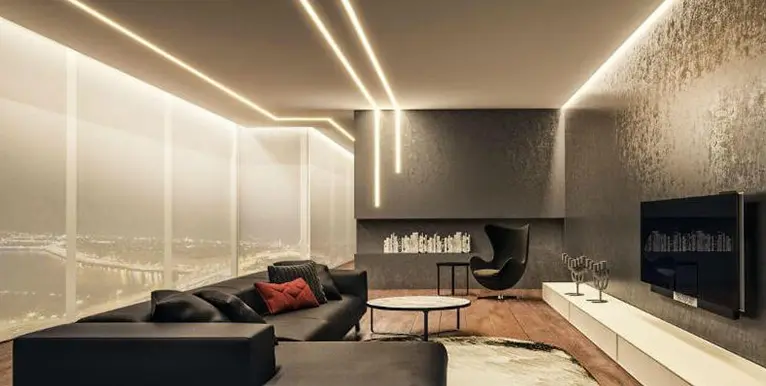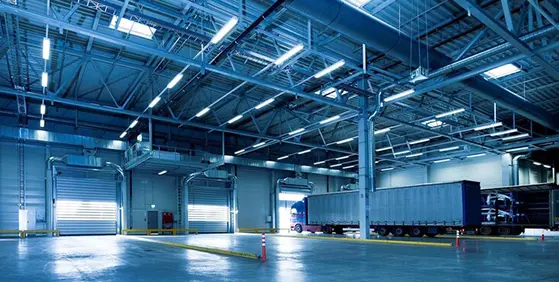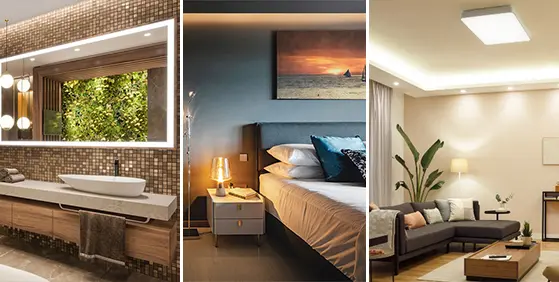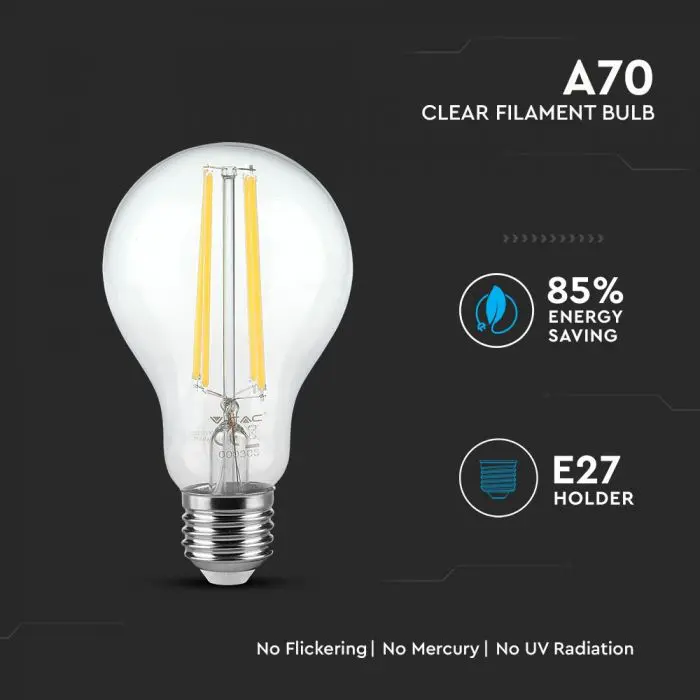How Can You Manage High Energy Prices Using LEDs
With energy prices currently at a record high, and with households facing an average energy bill rise of £900 next year when the government extends the energy price cap to £3,000 from £2,500, the pressure to find household cost-savings is on.
Shop LED Lights
Why are energy bills so high in the UK?
How much we pay for electricity depends on the price of the fuel used by UK power stations to generate that electricity. According to the energy regulator, Ofgem, fossil gas accounts for 39% of the fuel used by the UK for electricity generation. This is the largest percentage of fuels used by UK power stations, with coal at 35%, nuclear at 20% and 6% for renewables and other sources.
Russia is a major exporter of gas to the EU but in response to international sanctions imposed following its invasion of Ukraine, Russia drastically cut the supply of fossil gas to the West. This, combined with global energy demands bouncing back following the Covid pandemic, when demand dropped, has drastically reduced the availability of gas for UK electricity production and has pushed up its price.
The fact is, the UK still heavily relies on fossil fuels. Although this figure has rocketed in recent years, we still only take 43% of our energy from renewable sources such as wind, solar and biofuel. This means that 57% of our energy still relies on fossil fuels and nuclear energy.
In June 2022 the think tank Ember estimated that average electricity prices had risen by £116 per megawatt hour over the previous year and that £93, or 80%, of this increase, was due to the rise in gas prices.
What uses the most electricity in a home?
Wondering what costs the most on your electric bill? The answer is typically those household appliances that you use on an average day. What appliances use the most energy? According to the Energy Saving Trust, the top offenders in terms of energy-consuming appliances in the home are;
- LCTD TVs – costing on average £156 to run
- Fridge freezers (A-energy rated) – costing £139 to run
- Tumble dryers – costing £126 a year to run
- Electric hobs – at £102 p.a
- Electric ovens – £72 p.a
- Washing machines
- Dishwashers
These account for more than 27% of the average domestic electricity bill. Remember too that these are average figures, and your actual domestic consumption – and cost – could be much higher, especially if you are using older, less energy-efficient appliances. It’s interesting to note too that lighting represents around 11% of the average British home’s energy consumption, so let’s take a look at the best choice for lightbulbs.
With all the consumer electronics like computers and TVs we use these days, these are next at 6% of your bill while lighting comes in next at 5%.
While 5% may not sound like much, with energy prices rising at their current rates, what was once 5% of a small energy bill for your home is now 5% of a very large bill and worth reducing if you possibly can.
What is the cheapest lighting to use?
The Energy Saving Trust’s top tip for reducing the amount of money you spend on lighting is to replace incandescent and halogen bulbs with LED Lights. Halogens were already an improvement on the older incandescent bulbs and compact fluorescent lamps (CFLs) are also more efficient and longer lasting. But LEDs are king.
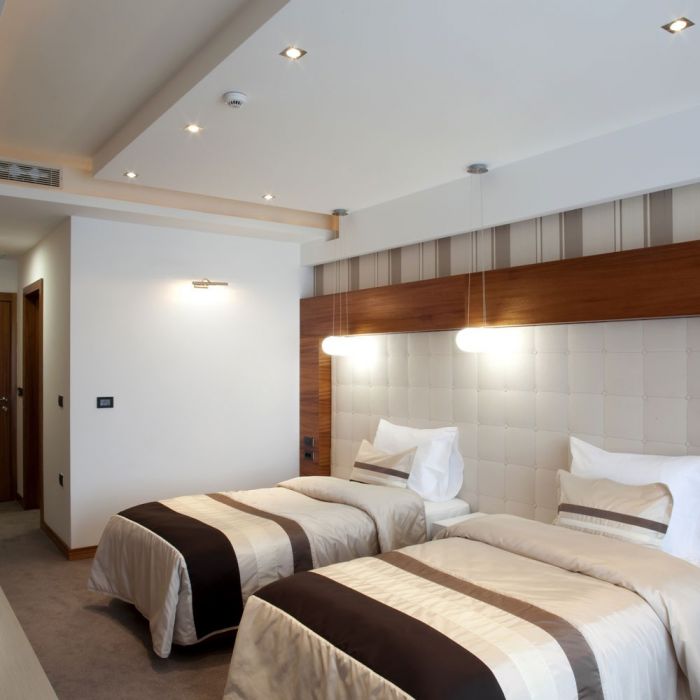
So, how much money could LED light bulbs save us? According to the US Dept of Energy, LED lights use at least 75% less energy, and last up to 25 times longer, than incandescent lighting. Changing a 100W incandescent bulb to an equivalent LED saves £13 per year for each bulb changed and £6 for every 60W incandescent bulb.
This is because LED stands for “light emitting diode” – a semiconductor that emits light when electricity is passed through it. An LED requires very little energy to emit light, compared to other lighting sources and they also last much longer. So, start saving on energy costs today with LED Lighting. There are environmental benefits too. By using LED across your home, you could slash your domestic CO2 emissions by up to 40kg – the same emissions load as driving your car for 145 miles.
FAQs
What is the average energy bill in the UK in 2022?
Wondering ‘what is the average UK electricity bill’? Figures are still being calculated for the latest estimated energy bills for the remainder of 2022 and moving into 2023 as the market is still incredibly volatile and subject to fluctuations. Figures from USwitch show that in the UK:
- The average electricity bill (as of 1 October 2022) is currently £987.16 per annum (excluding annual standing charges.)
- The average gas bill (as of 1 October 2022) is currently £1,239.60 per annum (excluding annual standing charges.)
Electricity bills have risen this year because of wholesale gas, which drives electricity production. Wholesale gas price increases mean that production prices increase and customers bear the cost. The average standard tariff energy bill is expected to rise further in the coming months, especially when the price cap is lifted again in April. This means that by next year, the average UK combined energy bill per household will be £3,549 – an unprecedented increase of 80% since the last cap average of £1,971.
According to the energy price comparison site Usave, the average electricity bill for a 3-bedroom house in the UK will be about £1,728 per year from October 2022. This is an increase from the current average of £1,004 per year. For a 1 bedroom flat, the average is estimated to rise to £1,208, up from £724. Both of these figures are estimates for electricity only and do not include the cost of any heating generated by gas or oil.
Can I leave LED lights on all the time?
An LED typically lasts 35 to 50 thousand hours and unlike incandescent bulbs whose filaments burn out due to the heat they produce, when LEDs finally fail it is usually not the LED “bulb” itself that has died, it’s the capacitor part of the unit which converts your mains AC (alternating current) power supply in your home to the DC (direct current) used by the LED, which can degrade over time.
We’ve already seen that LEDs use considerably less energy than other light bulb types and they last considerably longer. LEDs also stay much cooler than traditional lightbulbs, so they are very unlikely to overheat or become a fire hazard even when left on 24/7.
So you could leave them on all the time if you wanted to – but why would you?
Running a 3W LED is estimated to cost £0.0005 per hour. This gives an average cost of £1.86 per year for each LED – but this is based on what’s considered “normal” use, running the light for an average of 10 hours a day, 365 days a year. Keeping the same LED on 24/7, 365 days a year costs an estimated £4.38 a year. Now multiply that by all the lights in your home.
It’s simply common sense to turn off lights in your home when you’re not using them.
Is it OK to sleep with LED lights on?
A low-lumen LED makes a great nightlight due to its low cost to run, low energy use, low heat emissions and long life. A 3W LED will cost an average of £0.004 to run for 8 hours overnight so take a look at fitting a small wall downlight LED at a low level or a recessed wall LED in the bedroom to work as a nightlight. So, what does it cost to leave a light on all night UK? Utility Design warns that it costs £281.05 a year on average to leave domestic lights on overnight! You might want to think twice about leaving that bathroom light on.
Do LED strip lights use a lot of electricity?
Not particularly – they certainly use far less than incandescent light bulbs because of their efficiency and the very minimal amount of energy wasted in heat. Their energy-efficient design and lower electricity requirements mean that they are greener and cheaper to use in the home, in common with bulb-shaped LED lights.
LED strip lights have become a popular way for commercial properties to replace fluorescent strip lighting because of their lower energy consumption, longer lifespan and lower energy cost.
The use of LED strip lighting in domestic situations is one of the most exciting developments in recent home lighting design because an LED strip has such a low profile that it can be fitted into places where no other lighting type can fit and can be controlled to emit light of almost any colour. LED strips can be fitted under shelves, closets or even beds to emit light into dark corners, making small rooms feel larger and adding ambience to previously dull spaces. You can see our full range of LED strip lighting choices here.
Will LEDs reduce my carbon footprint?
Yes.
Your carbon footprint is the amount of carbon dioxide and other greenhouse gasses (measured in kg or tonnes) that are put into the atmosphere when you use energy in your daily activities. This includes the fossil fuels like gas, coal or oil that are burned to make the electricity you use to light and heat your home, cook your food and run appliances. It’s these greenhouse gases that are warming the planet by trapping heat from the sun inside the Earth’s atmosphere and causing climate change.
As we saw earlier, gas and coal account for 74% of the fuels burnt to create electricity in the UK so the less of it you use, the lower your carbon footprint. According to the Energy Saving Trust “If you replace all the bulbs in your home with LED lights, you could reduce your carbon dioxide emissions by up to 40kg a year.”
Converting any of the older types of light bulbs in your home to LEDs will save on your energy bill this year and well into the future. Take a look at all our stylish and practical solutions here and start saving money today.
Is it worth switching to LED bulbs?
In short, yes – LED bulbs are the most energy-efficient choice, the most durable bulb – lasting for up to 100,000 hours each, and the cheapest to run whilst requiring the least electricity. Wondering why blue LEDs use more power? They use chemical reactions needed to produce the white light needed for your devices and smartphones – so turn down your backlight to save energy!
Is it cheaper to leave lights on or turn them on and off?
According to energy non-profit Ebio, it’s an urban myth that it takes more energy to switch your lights on and off – so err on the side of caution and switch off any in rooms you aren’t using.
Conclusion
In short, if you’re looking for ways to keep your home’s energy bills as low as possible this winter, it’s time to look at LEDs! Some other measures you can consider to minimise your electricity and gas needs – and bills – include:
- Sign up for a variable pricing energy tariff so that you gain a rebate if you stop or reduce energy usage at certain times of day (look at Octopus for example.)
- Switch baths for showers and run them for less time.
- Try a heated throw or hot water bottle for warmth rather than switching on the central heating.
- Invest in insulation upgrades for your home wherever possible, such as cavity wall insulation or double glazing. Failing that, heavy thick curtains and draught excluders, yes – like the ones your granny made – are great DIY hacks that make a difference.
- Use a slow cooker or pressure cooker rather than switching on your oven for hours. A microwave is also cheaper and faster than a conventional oven.
- Fill your kettle with the exact amount of water you need to boil.
- Once you’ve switched your lightbulbs to LEDs, get in the habit of going around the house and switching off lights, power cables, standby items and anything not in use.
- Turn your washing down and stop using the tumble dryer – use a washing line or maiden close to the radiator.
- Move your sofas and furniture away from radiators as they rely on convection to push warm air into the room.
- Only run your dishwasher when it is full to minimise loads.
You’ll be surprised at how much you can save with these kinds of steps – potentially up to £564 a year according to the Energy Saving Trust. So don’t despair at those rising bills – help is also on its way to millions of homes through the Energy Bills Support Scheme, and there are plenty of steps you can take to minimise your bills in the meantime.


